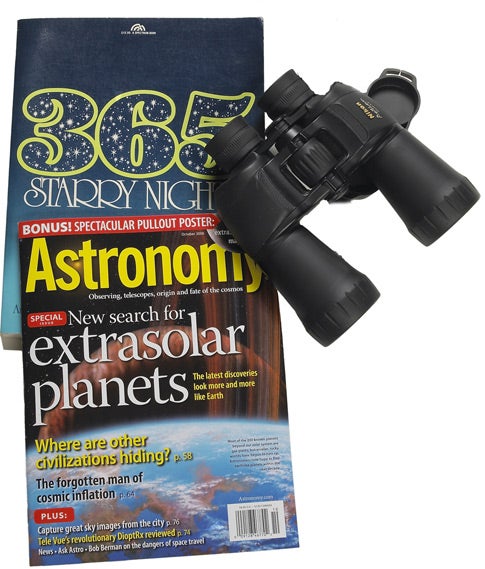The galaxy of instruments available on the market overwhelms many first-time buyers. If you’re one of them, sit down and relax while I fill you in on the ins and outs of purchasing a good beginner’s scope.
First, a bit of advice you probably won’t want to hear: “Before you buy, know the sky.” It’s easy to understand why someone who just saw a fascinating astronomy show on television would want to pick up a telescope and blast off into space. Alas, the voyage will be short-lived if the viewer can’t identify key stars and constellations.
I speak from experience. After being introduced to the sky by my second-grade teacher, I couldn’t wait to see firsthand the cosmic wonders she described in class. A “telescope” fashioned from a milk carton with a slit at one end where I inserted crayon drawings of the planets and viewed through a hole at the other end didn’t satisfy my cosmic wanderlust. So I did what any kid would do — held my breath, whined, and begged until my parents gave in and bought me a small tabletop refractor.
At first, my heavenly odyssey went well. The Moon was a fabulous sight in my small scope. But when I ventured to other parts of the galaxy and couldn’t find my way, I became discouraged and bored. Eventually, my poor little telescope was relegated to the toy box, where it met an untimely demise under my Tonka trucks.
A telescope in the hands of someone who doesn’t know his or her way around the night sky is doomed to a similar fate — well, maybe not in a toy box, but certainly the attic or cellar. Search Amazon.com for Chet Raymo’s 365 Starry Nights. This book takes the reader on night-by-night tours into the cosmos. Through clear illustrations and text, Raymo explains how to find the constellations and then describes the wonders contained therein.
A second pre-telescope must is good binoculars, preferably the 7×50 or 10×50 size. Binoculars bridge the gap between unaided eye and telescope and really come into their own on large, bright sky objects like the Pleiades or Andromeda Galaxy. The number preceding the “x” is the magnifying power; the number following is the diameter of the objective lenses, expressed in millimeters. Every experienced amateur astronomer I know owns and regularly uses binoculars. The good news for the beginner is that, if he or she doesn’t already own binoculars, it’s fine to purchase a pair right away and use them while learning the night sky. Take the time to explore some of the binocular sights that my friend Phil Harrington describes in his column (page 20).
And now to answer the question, “What’s a good beginner’s telescope?” For me, nothing is a better fit for the novice than a Dobsonian-mounted reflector — a 4-inch for a youngster or slight-of-build adult, a 6-inch for anyone else. Such an instrument is a versatile performer — allowing views of the Moon, planets, and hundreds of deep-space objects.
The beauty of a Dobsonian-mounted telescope is its ease of use. Unlike a high-tech telescope that requires an engineering degree to operate, a child can handle a basic Dob. Expect to invest around $200 for the 4-inch size and anywhere between $250 and $300 for a 6-inch. I use the term “invest” because a good telescope, if properly cared for, will provide its owner with a lifetime of celestial adventure. It also will serve as a back-up should the owner graduate to a larger, more high-tech instrument.











